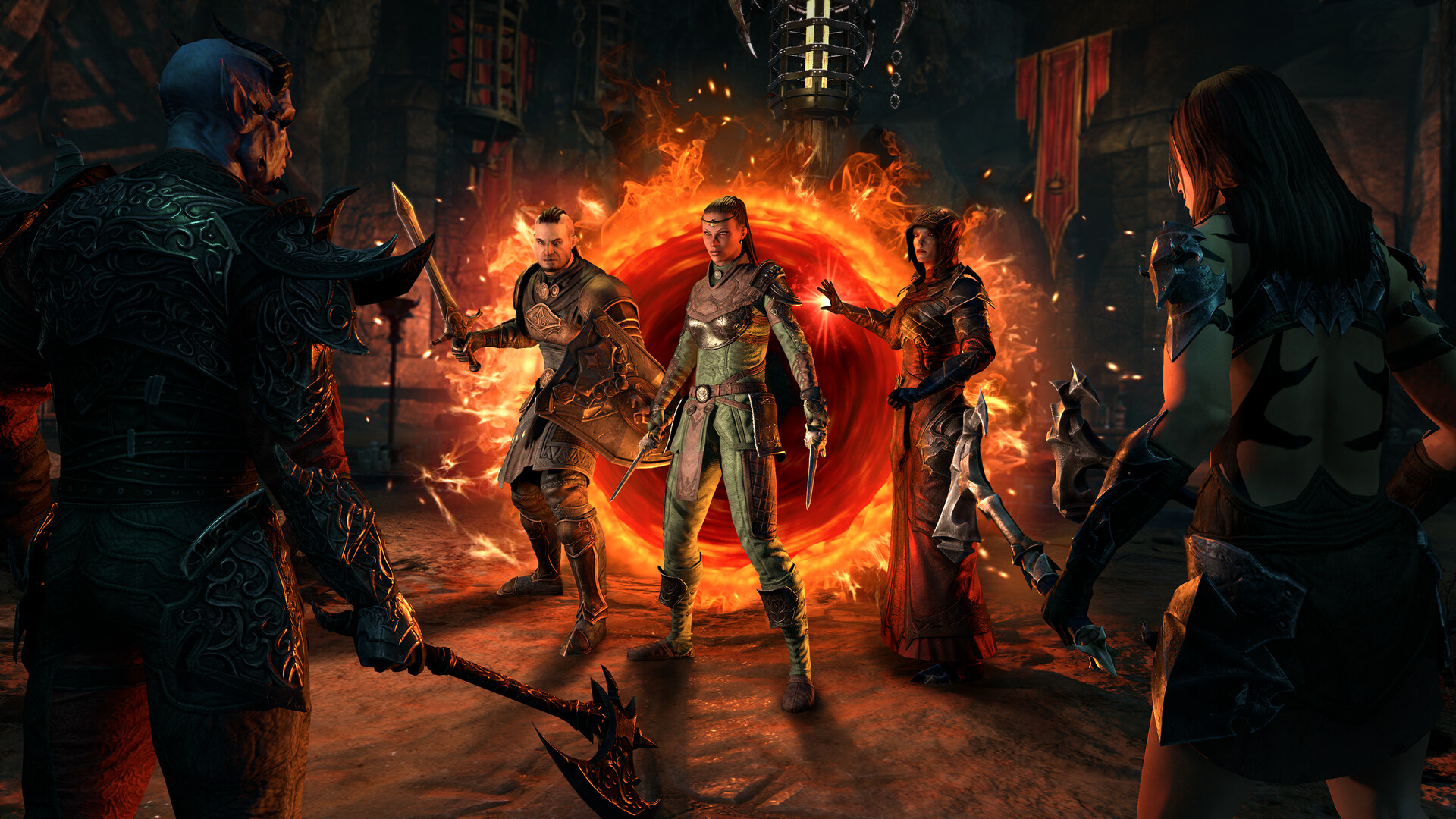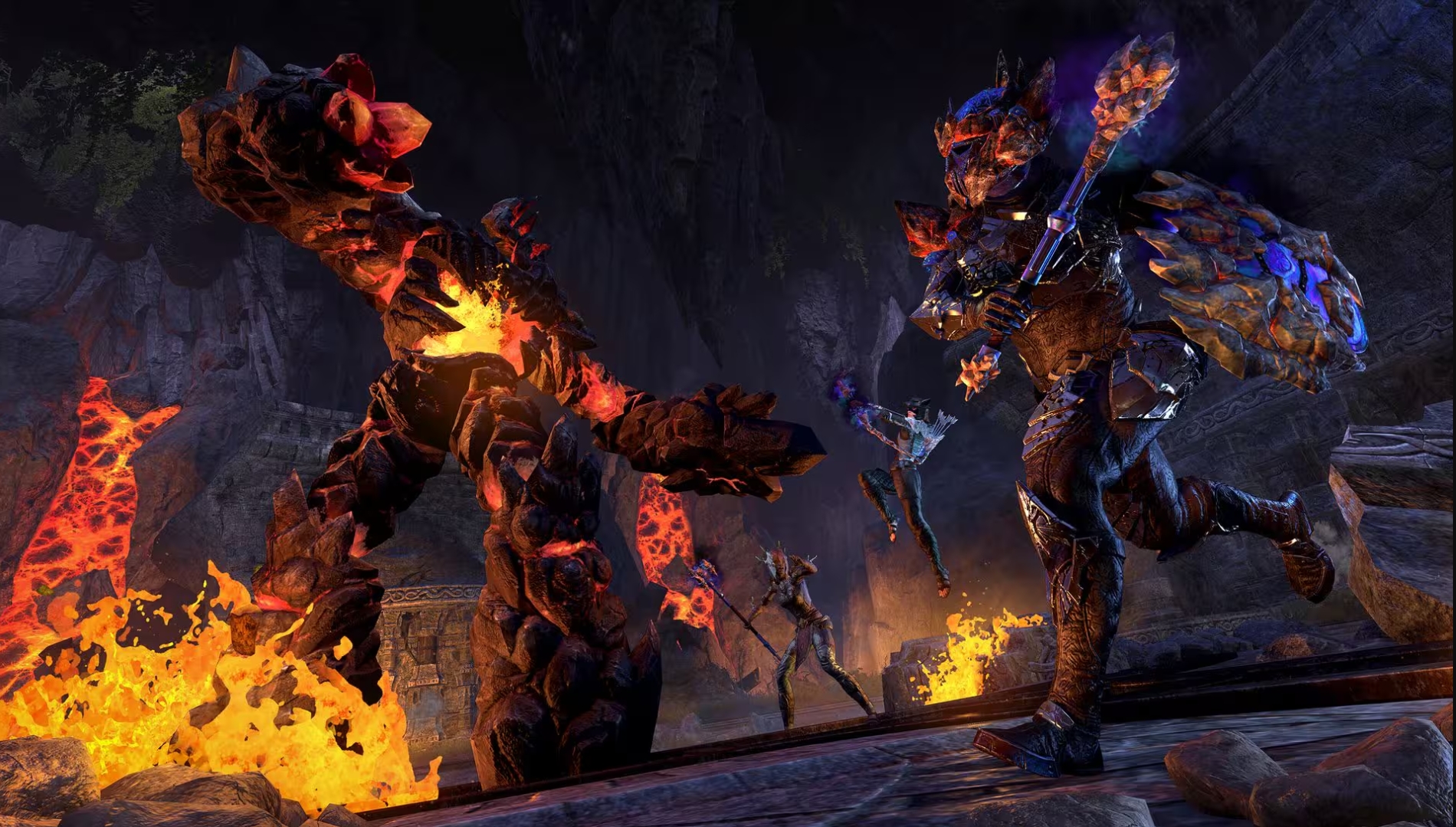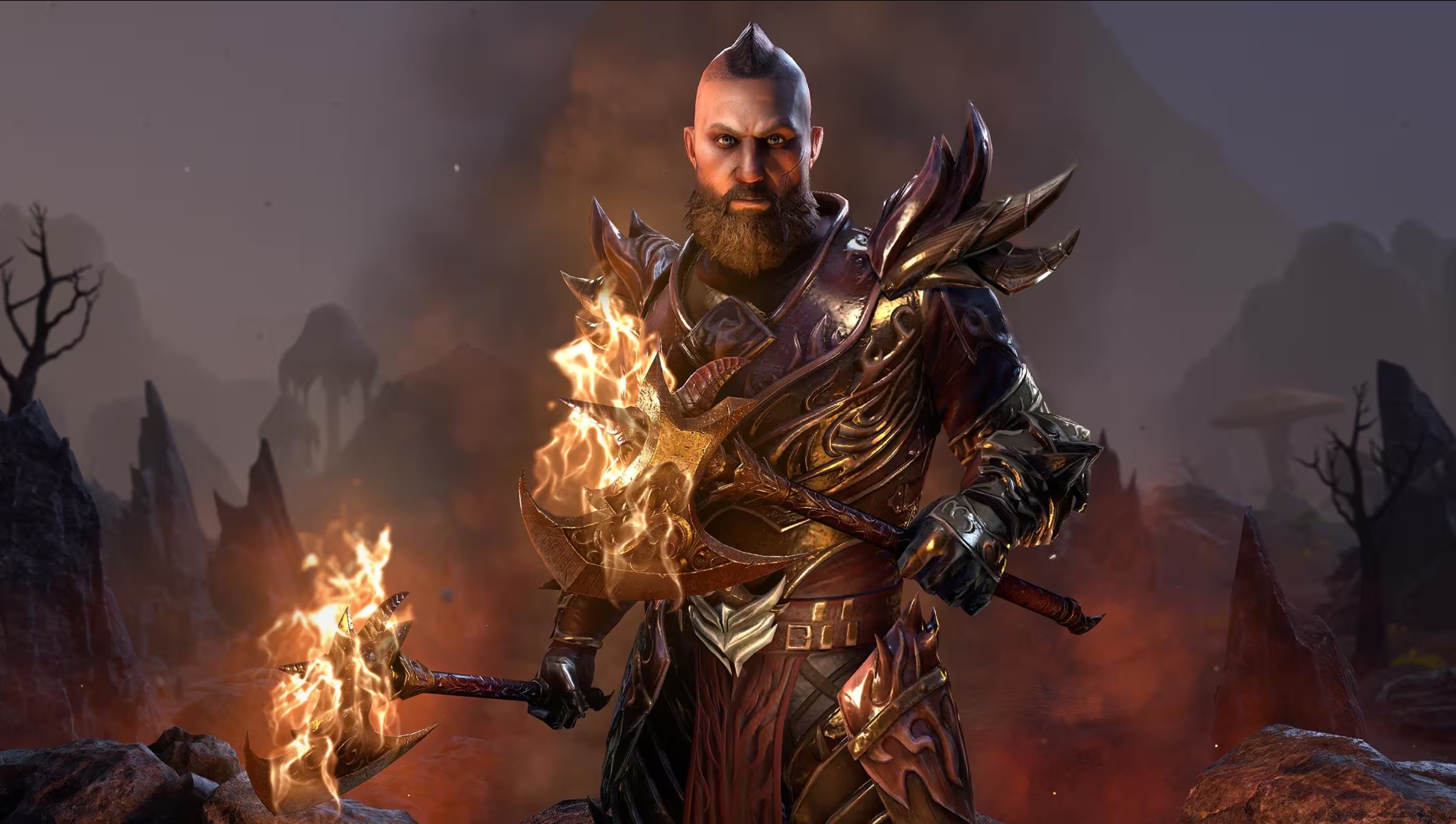Welcome to Party Pyro’s ESO PvP Grouping Guide part 1.4. Don’t venture into Cyrodiil alone! The best thing your can do to increase your overall effectiveness in Cyrodiil is to join up with an objective based well-coordinated group. Working with a good group can exponentially increase your impact on the battlefield. There are several keys to finding a group and many aspects that separate the legends from the bads. We’ll be covering all that and more this week in Party’s PvP Palooza (OoOoOoOo the name of the guide in the guide gives me goose bumps).
Looking For Group (LFG)
 The simplest and most rapid way to get yourself an invite to a group is to shout LFG in zone chat while you’re in Cyrodiil. You can supplement this declaration by identifying your level and role. An example of this would be Healer LF Veteran Rank (VR) Group. Alternately, broadcasting you’re a noob DPS isn’t going to help you much (In that case just stick with the generic LFG). You could also add a specific objective and location like: LFG Alessia Defense. If you’re already participating in a fight and you see a large group of people working in unison you can use /yell and ask for a group invite. Using /yell shouts your request out locally instead of to the entire zone. All of these are tools in your arsenal to find a good group.
The simplest and most rapid way to get yourself an invite to a group is to shout LFG in zone chat while you’re in Cyrodiil. You can supplement this declaration by identifying your level and role. An example of this would be Healer LF Veteran Rank (VR) Group. Alternately, broadcasting you’re a noob DPS isn’t going to help you much (In that case just stick with the generic LFG). You could also add a specific objective and location like: LFG Alessia Defense. If you’re already participating in a fight and you see a large group of people working in unison you can use /yell and ask for a group invite. Using /yell shouts your request out locally instead of to the entire zone. All of these are tools in your arsenal to find a good group.
So Many Bads
 The “Zerg” (Mindless continuous assault) mindset is deeply engrained in the current adaptation of Cyrodiil. Joining a group that doesn’t listen and just attacks everything that’s shiny isn’t your best bet. But sometimes this kind of group is your only option. In fact, my biggest inspiration to start these guides was so that I could educate a few people about PvP and decrease the population of ignorant PvPers. One general term for a random group is a Pug. Pug stands for pick-up-group and generally infers that those random people are terrible. All in all, it’s better to be a pug wrangler that tries to convince the zerg puppies to do an objective than sitting out of the fight entirely. So if that’s your only option then just go with it until you find something better. Eventually, you’ll find a good group of people to run with and can play with on a regular basis.
The “Zerg” (Mindless continuous assault) mindset is deeply engrained in the current adaptation of Cyrodiil. Joining a group that doesn’t listen and just attacks everything that’s shiny isn’t your best bet. But sometimes this kind of group is your only option. In fact, my biggest inspiration to start these guides was so that I could educate a few people about PvP and decrease the population of ignorant PvPers. One general term for a random group is a Pug. Pug stands for pick-up-group and generally infers that those random people are terrible. All in all, it’s better to be a pug wrangler that tries to convince the zerg puppies to do an objective than sitting out of the fight entirely. So if that’s your only option then just go with it until you find something better. Eventually, you’ll find a good group of people to run with and can play with on a regular basis.
Characteristics of an effective group—Sometimes it takes a minute to identify a group who has its act together, but here are a couple tell-tell signs.
Voice Communication
 Having some sort of voice communication is your biggest clue that a group is more than a pug club. Voice communication is insanely more effective than typing out orders in text chat. You can instantly convey orders and ideas to a group that could take several seconds to type out. Also, yelling in somebody’s ear is far more attention grabbing than all caps in a small chat box on the edge of your screen. There are many voice communication programs used, but the big ones are TeamSpeak3 (TS), Mumble, and Ventrilo (Vent). Having some of these pre-downloaded before you look for a group can really help you jump right in. (Another group finding phrase: LFG with voice)
Having some sort of voice communication is your biggest clue that a group is more than a pug club. Voice communication is insanely more effective than typing out orders in text chat. You can instantly convey orders and ideas to a group that could take several seconds to type out. Also, yelling in somebody’s ear is far more attention grabbing than all caps in a small chat box on the edge of your screen. There are many voice communication programs used, but the big ones are TeamSpeak3 (TS), Mumble, and Ventrilo (Vent). Having some of these pre-downloaded before you look for a group can really help you jump right in. (Another group finding phrase: LFG with voice)
Leadership
 When a character has leadership over a group it is signified in the group bar by a crown next to their name. In game this character has a crown over their head and this makes them easily identifiable amongst the generic V’s over everyone else’s head. Just because somebody has this crown doesn’t mean they are a good leader.
When a character has leadership over a group it is signified in the group bar by a crown next to their name. In game this character has a crown over their head and this makes them easily identifiable amongst the generic V’s over everyone else’s head. Just because somebody has this crown doesn’t mean they are a good leader.
One thing to look for is to see if the leader has any control over their group. Is the leader giving effective instructions? Is the group listening to what the leader says? Answer these questions and you’ll also answer if they are an effective leader.
I know it’s not tactic week, but holy crap I need to get this one out there… Stack the Crown: This is when everyone in the group is supposed to stand with the leader of the group and follow them wherever they go. This is one of the least followed rules in a pug group and it’s a huuuuuuge deal. This simple tactic divides a successful keep assault from a massacre. STACK ON THE CROWN GUYS!!! Seriously…
Having a clearly defined leader is another component to an effective group. Three people arguing over what to do only delays action and adds confusion. That’s nothing against discussing tactics, but once a decision is made, the group should follow as long as it’s not pure lunacy. A well-executed bad plan can be more effective than a poorly executed genius strategy.
So what are some of your group experiences? Have any funny pug stories? Is there anything I forgot to cover? Let me know if there’s anything you want to know!
Well, that’s all I’ve got for you this week. Get out of here! Na, just kidding. You’re always welcome.
 Reddit
Reddit
 Email
Email


